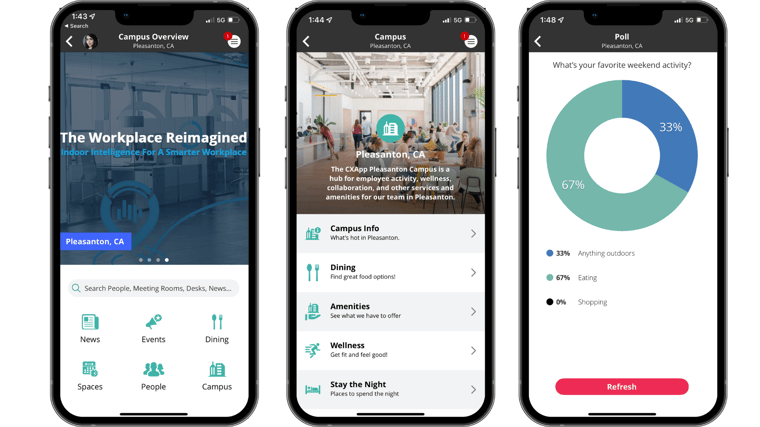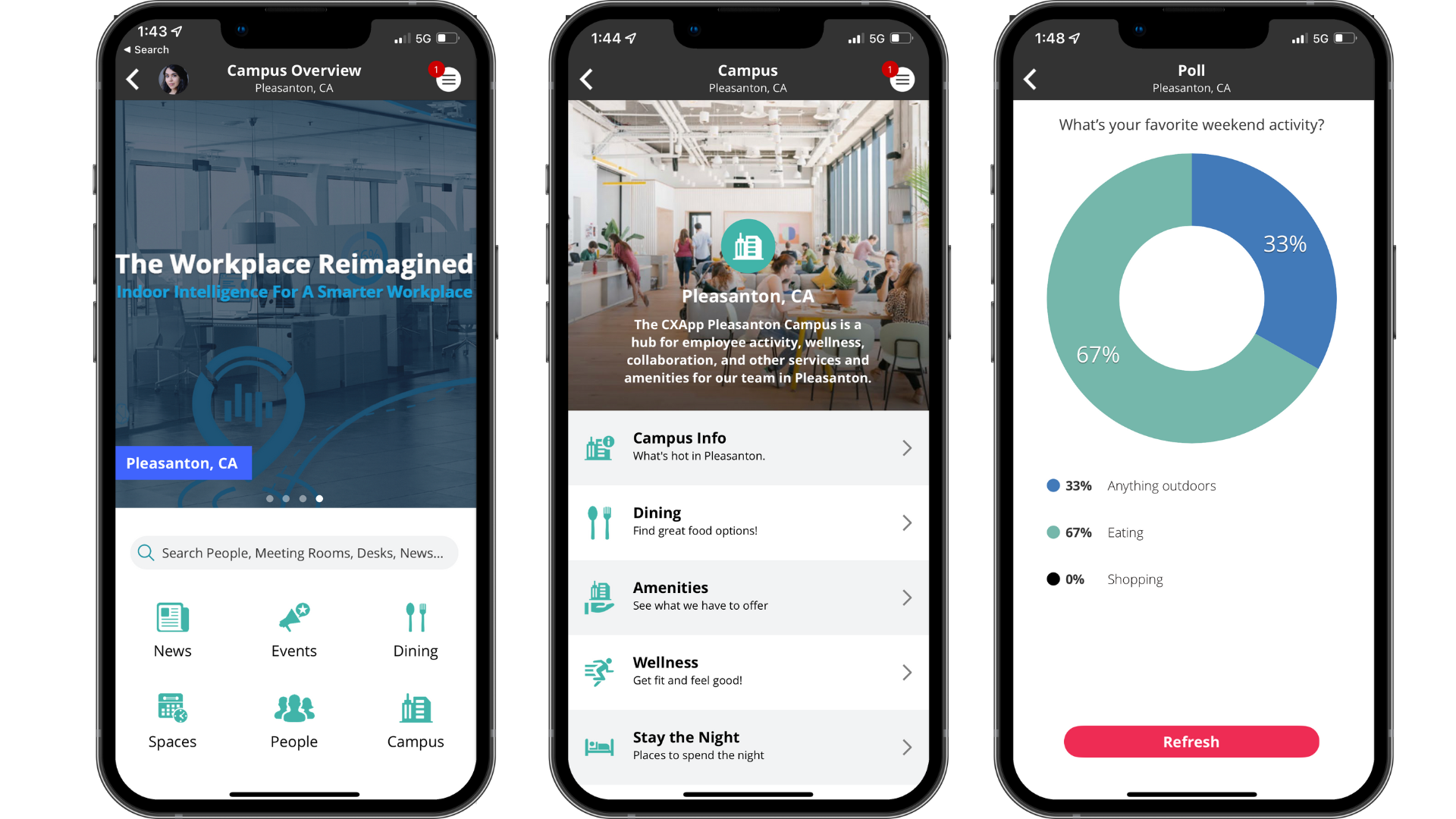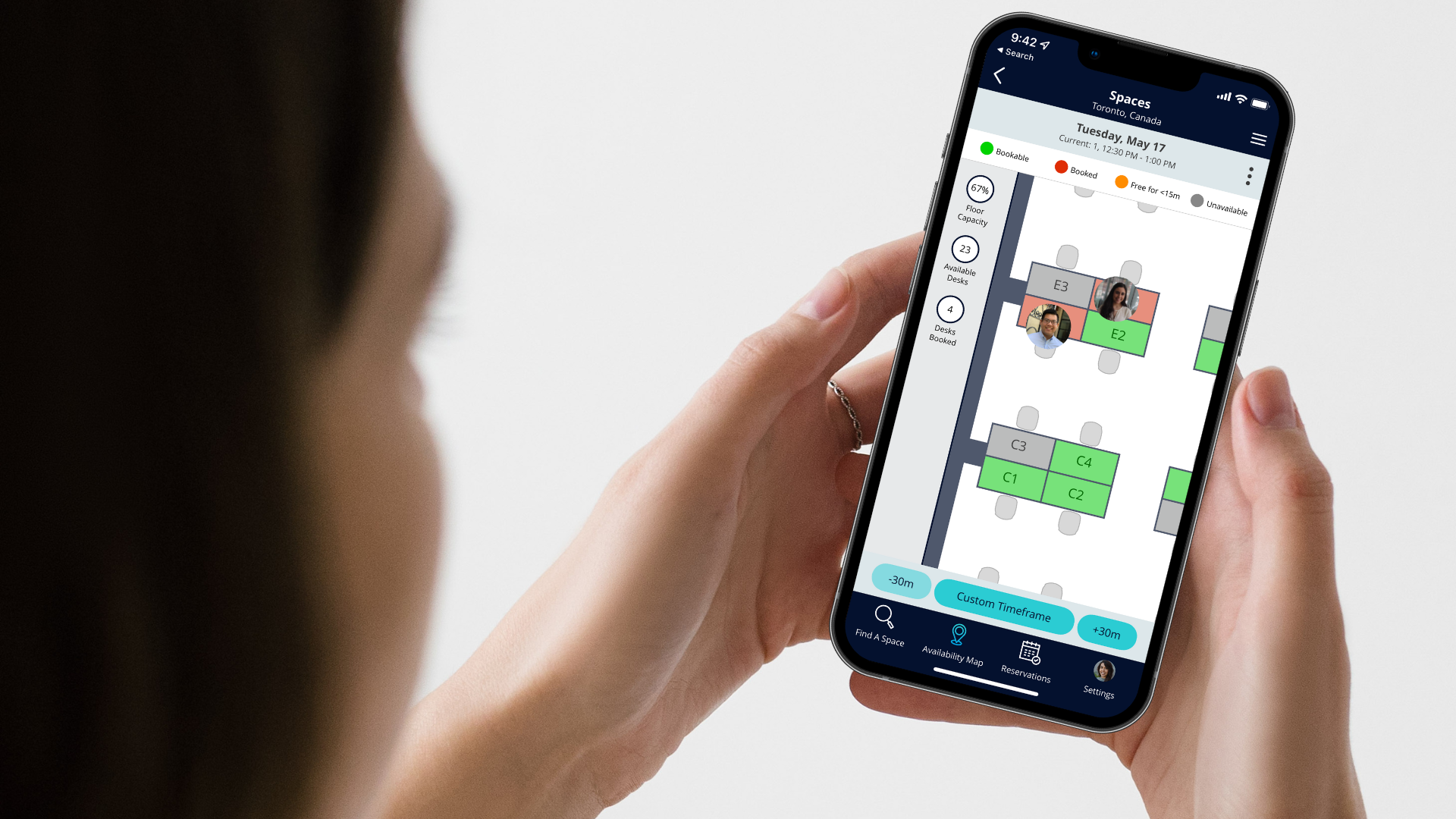
As employees all around the world have adjusted to remote and hybrid work, organizations are struggling to get them back in the office even a few times a week. In fact, only 28% of leaders have defined their return-to-office plans, including what days employees will go in. Over the pandemic, employees got used to the work-life balance that remote work offered - by being able to spend more time with their families, run errands on their lunch breaks or go to appointments without disrupting the workday. In this article, we'll explore why employees are reluctant to go into the office and how an employee experience platform can help address these challenges.
Why Are Employees Reluctant to Return to the Office?
Now that it's become safer to work in the office, companies have been trying to figure out their return-to-office plans with many getting resistance from employees. There are several reasons why employees may be responding negatively to these mandates but some of the more common reasoning being cited are:
- They don't want to return to an environment where they feel watched and micromanaged
- Office snacks and ping pong tables aren't worth the morning commute
- The rising costs of gas prices and childcare are creating unforeseen expenses
- They don't understand the point of returning to the office when their team was collaborating just fine virtually
- When they do come into the office, their team isn't there, so they don't get the interactions and collaboration that encourage them to show up in the first place
- They think the reason they have to return is because of the company's real-estate costs and their managers' need for control - not to bring value to them
It's clear that while before the pandemic employees enjoyed perks that came in the office like free meals or rides around the corporate campus, they now value a hybrid work model that gives them flexibility in their day to day lives.
The Underlying Theme Behind the Slow of Return-to-Office
The big issue here is a lack of communication - not only about the company's return-to-office plans, but the reason behind the decisions. Employees want to be involved in the decisions that will impact their day-to-day life, and have their concerns heard. For a return-to-office to work, they need to see what value they'll get - and it can't be the same office lunches that could pass pre-pandemic.
In fact, a survey of over 600 Apple employees found that 76% of respondents were not satisfied with the return-to-office plans and 56% said they'd consider resigning over it. When organizations don't take their employees' needs into consideration, they risk losing their best talent and are left with underutilized office spaces. So what can companies do to manage these return-to-office challenges?
Solving Return-to-Office Challenges Starts with Employee Experience
How well you manage the employee experience is key to navigating return to office challenges, which is why leaders are turning to technology to bring connectivity and restore culture in the workplace. A key way to do that is with an employee experience platform that streamlines communication and supports a hybrid work model that works.
1. Keep Employees Connected to their Office, Whether They're On-Site or At Home

What's the best way to connect employees, no matter where they are? By centralizing communications and digitizing touchpoints. An employee experience app provides a platform where employees can get all the same news and updates from a company-wide feed, the ability to interact and share content with colleagues from departments who they may not typically have the opportunity to collaborate with, seamless access to corporate resources and so much more.
A company workshop, town hall, or lunch happening? It can be announced on the app, where employees can engage with the event, or coordinate with other team members. Take it a step further by letting remote employees join in virtually, to connect all employees.
2. Get Feedback on How to Improve Your In-Office Experience
The focus on return to office plans should be on the employee experience - so hear them out using anonymous surveys and questionnaires. This can be done on an employee experience app, making it very easy to answer questions on their phone or come back to it when they have time. Incentivize employees further by offering the chance to win a gift card if they complete the survey.
By asking them how often they'd visit the office, what they would change about the office, and what's stopping them from coming back, you gain insights that help make important decisions about the corporate campus. With the information you gain from the surveys, see what's working and what isn't.
3. Redesign Your Office to Meet the Needs of Your People

Using employee feedback, evaluate whether or not the office space is serving the right purpose. If employees prefer the office to be a space for collaboration, make sure there are enough conference rooms and lounges. If they need the office to have better amenities, such as a gym or yoga rooms, consider prioritizing wellness spaces. Make sure that desks and conference rooms have relevant, updated technology like video conferencing hardware, accessible USB ports, and adequate cybersecurity.
4. Make it Easier for Teams & Departments to Coordinate In-Office Collaboration
Coming to the office for the first time in a while can be daunting, especially if you don't know who else is coming. That's why an app that allows you not only to book a desk or reserve a meeting room, but also do so right next to the colleague or team you're working with, makes it a much better experience. The main reason employees come to the office is to collaborate with others, because it's the one thing they can't do at home. So not only can you access turn-by-turn indoor navigation to the exact room you're working in, but they can plan in advance who they're working with, which increases the number of employees that show up at the office.
5. Offer On-Site Resources that Promote Wellness, Community & Culture

Make the office an exciting place to be, and a change of pace from working at home. 88% of companies use incentives to get their workers back on-site - so consider offering free resources, such as live classes, seminars and workshops, that encourage wellness and build culture, at each location. Then, use mobile notifications via an employee experience app to directly promote these events to your employees and encourage them to attend. Examples include leadership sessions, wellness workshops or a baseball game after work. Not only can employees collaborate with colleagues, but they can also get a chance to have fun outside of their daily life, at the office.
When creating a return-to-work strategy, make sure it matches with what employees truly want, and make sure it makes sense to them. If they want to work with their team in-person, offer the chance to book desks together midday so the whole team shows up and they can skip the morning traffic. Alternatively, if employees are visiting the office twice a week, make sure that there's extra value in coming in, on those days. Use an EX app to create a culture where employees are happy with their daily schedules and feel truly connected to their colleagues.

.png)

.png)



.png?width=450&height=250&name=How%20To%20Safely%20Return%20To%20In-Person%20and%20Hybrid%20Events%20(3).png)


